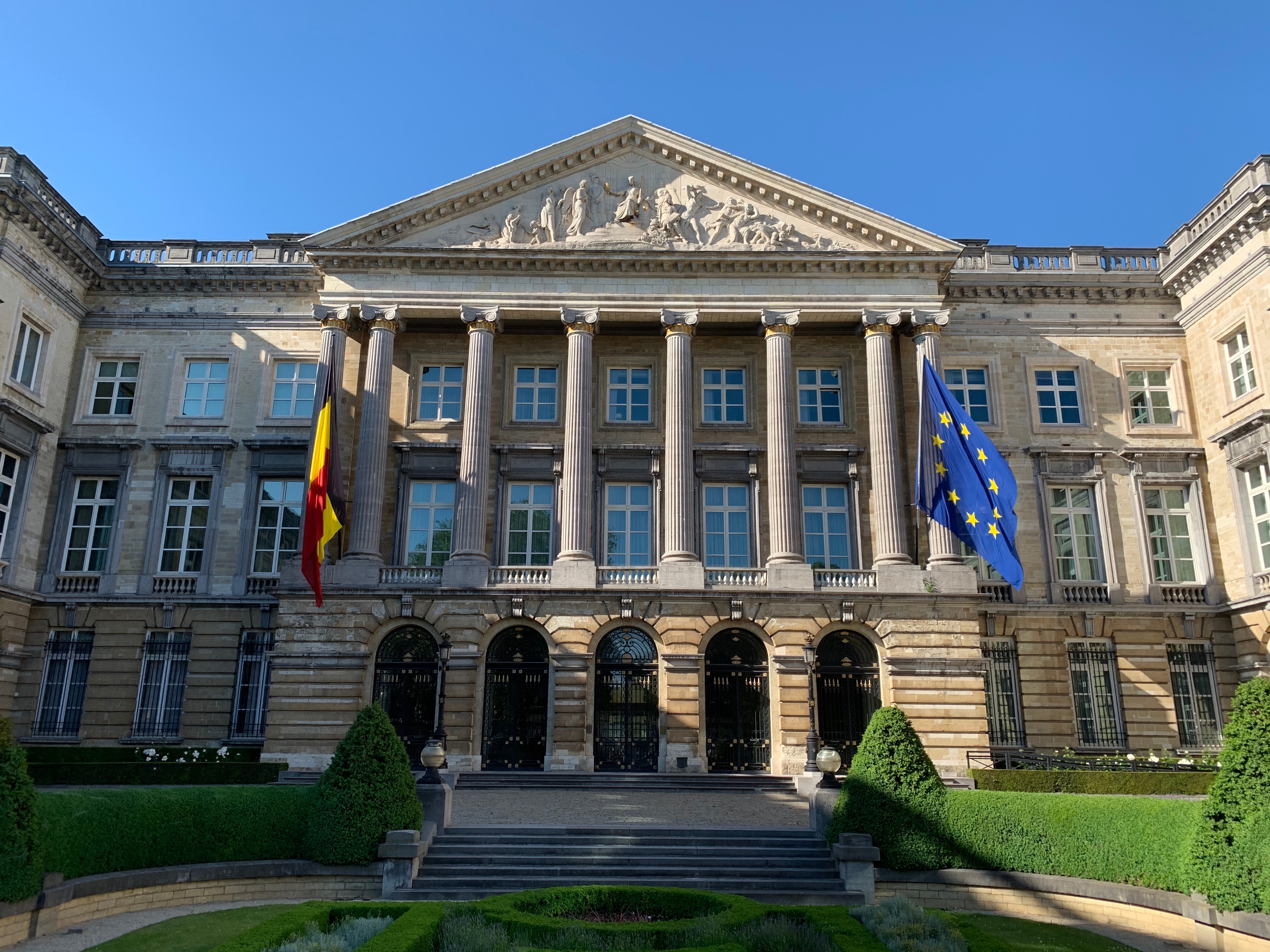Energy policy has always required a long-term perspective, as future generations depend on policymakers to ensure secure, reliable, and sustainable energy decisions. In 2025, this need is more urgent than ever, with the arrival of Generation Beta and a political landscape reshaped by the Belgian elections.
As a new generation steps in, the old one steps out, leaving behind a government reshuffle that is set to influence energy policy significantly.
Thus, 2025 not only marks the rise of a new generation but also the formation of new government coalitions, bringing fresh priorities for energy and climate policy. With the swearing-in of the new federal government, we provide an overview of key policy positions at both the federal and regional levels (excluding the Brussels Capital Region, which is not yet formed).
This update offers an objective perspective on Belgium’s evolving energy policy, based on the respective government agreements.
Energy policy
The Belgian federal government has laid out a comprehensive framework for its energy policy, which will address several key challenges. The new minister of Energy will be Mathieu Bihet and the minister responsible for the North Sea will be Annelies Verlinden. According to the Federal Government Agreement, energy policy will be a critical focus, with decisive actions required, especially in the context of the energy transition. The agreement stresses the need for collaboration between the federal government and the regional authorities in the development of a long-term energy vision, which will be anchored in an "interfederal energy pact". In addition, the government aims to establish the High Council for Energy Supply, which is meant to provide assistance to the government for providing objective calculations.
The policy aims to balance three main objectives: reducing energy consumption, expanding reliable energy capacity and enhancing the competitiveness of the Belgian industry, which faces high energy prices. Key elements of the future energy policy include:
- European cooperation: Belgium recognises the importance of aligning with European goals to reduce greenhouse gas emissions by 55% by 2030 and achieve climate neutrality by 2050. The government will advocate for a coordinated European approach, particularly in the context of state aid policies, to address the competitive disadvantage that Belgium faces in terms of energy prices for industry.
- Fossil fuel phase-out: The Belgian government aims to phase out fossil fuel dependency while boosting the country’s energy independence. This includes not approving new fossil fuel installations except for transitional technologies, promoting decarbonised consumption, and gradually reducing fossil fuel subsidies. Measures to support green energy will be introduced, and taxes, excise duties, and network costs will be adjusted in collaboration with regional governments.
- Nuclear energy: The Belgian government emphasises the principle of technological neutrality in achieving a carbon-neutral energy mix. However, there is also a clear renewed commitment to nuclear energy, targeting a 4-gigawatt share in the electricity mix. Contrary to previous policies, nuclear energy will play a crucial role in Belgium’s future energy policy. The government has announced a program to revive Belgium’s nuclear industry and repeal all provisions related to the nuclear phase-out and the ban on new capacity construction. The lifespan of existing nuclear plants, like Doel 4 and Tihange 2, will be extended, and investment in new nuclear capacity is planned. The government also aims to foster international collaboration on nuclear projects and participate in European initiatives for Small Modular Reactors (SMRs).
- Offshore wind energy: Offshore wind energy is highlighted as a key component of Belgium's energy strategy. The government considers extending the construction timeframe to five years for offshore wind farms (still ambitious but more aligned with industry concerns that previous commissioning deadlines were too demanding) and explore repowering existing wind energy zones. It seems that the commitments of the previous government on the current Princess Elisabeth Zone will be upheld, with an evaluation following the first parcel's development. The government has indicated the possibility of potential adjustments to the framework for the remaining two parcels based on market feedback from the first. Given these considerations, some delays in the rollout of the Princess Elisabeth Zone under the new government seem possible.
- Also the need for interconnection and coordinated infrastructure with neighbouring countries in the North Sea is emphasised, with inter alia a commitment to a short-term decision on the highly debated energy island to which offshore wind farms will connect, set for March 2025. The government indicates that its decision will consider the (non-)allocation of contracts by Elia for the DC infrastructure and the exploration of alternative options, including connecting the island via AC and assessing the feasibility of a direct connection with Nautilus.
- Flexibility and interconnection: The government will develop flexible solutions to integrate nuclear and renewable energy sources, promoting market mechanisms and supporting decentralised innovation. The government also plans to prioritise interconnections, advocating for EU policies that strengthen transport networks and energy security.
- Affordability: To maintain energy affordability, the government will work to prevent undue burdens on households and businesses. Measures will include reducing electricity excise duties for businesses and lowering transmission fees for energy-intensive industries. Price monitoring will be intensified, and the CREG will expand its analysis of energy prices in export markets to ensure competitiveness. The government also announced continued efforts to make energy invoices more transparent.
- Hydrogen: Belgium aims to position itself as a hub for hydrogen and its derivatives. The government will promote low-carbon hydrogen production, develop necessary infrastructure, and collaborate with the EU to adjust regulations to support industrial decarbonisation with hydrogen. The goal is to create a large-scale hydrogen chain as part of a broader energy policy.
- Nuclear expertise and waste management: Belgium will continue to support nuclear research and innovation, particularly in collaboration with the SCK. The government plans to focus on safe nuclear waste management and long-term radioactive waste strategies. Funding will be allocated to organisations like NIRAS to address nuclear obligations, and an evaluation of waste management practices will be conducted to ensure sustainability and fairness.
In conclusion, the Belgian energy policy will focus on transitioning to sustainable energy sources while ensuring affordability, competitiveness, and security of supply. There is a clear shift towards placing greater emphasis on nuclear energy in the coming years, with plans not only to extend the life of existing nuclear assets but also to construct new ones. Close cooperation between the federal and regional levels, along with alignment with EU goals, will be essential to successfully implement these objectives in the coming years.
Climate policy
The Federal Government Agreement emphasises an integrated climate policy, recognising the urgency of climate change and biodiversity loss. The government is committed to a sustainable transition aligned with economic growth, aiming to reduce emissions while fostering job creation and industrial development. Rather than focusing on punitive measures, the approach encourages climate resilience through incentives, energy independence, and resource efficiency.
The key pillars of the government's climate action include governance, emission reductions, environmental protection, circular economy, and North Sea management. It aims for inter-federal cooperation, fostering a more coherent climate strategy, and focusing on competitiveness within the Green Deal framework. The government intends to reduce the environmental impact of public buildings and industry, promote energy-efficient renovations, and support innovation in sectors like mobility, energy, and waste management.
The government also announced a simplified decision-making process for homeowner associations in apartment buildings, allowing energy-related investments to be approved by a simple majority. This is an important step in also making that part of the real estate sector more sustainable.
The federal policy also focuses on circular economy initiatives to optimise resource use, enforce sustainability in product norms, and reduce raw material dependency. Efforts will include better management of critical raw materials, improving waste management, and advancing sustainable e-commerce.
In terms of taxation, the government plans reforms to support green investments and make the energy transition more affordable for businesses and households, offering tax incentives for sustainable technologies. These changes are designed to ensure a fair transition to a low-carbon economy, creating green jobs while maintaining economic growth.
Compared to the previous government, the new policy shifts focus from ambitious public investments to more industry-driven initiatives, prioritising economic stability, private sector involvement, and energy security over rapid environmental targets.
On 28 September 2024, the new Flemish government was formed after four months of negotiations, with a government agreement outlining energy policy goals for the 2025-2029 period. This policy seeks to combine ambitious climate goals with economic stability and social fairness, ensuring that the energy transition is both effective and affordable for citizens and businesses. Melissa Depraetere from the socialist party Vooruit was appointed as the competent minister for energy.
The Flemish government’s energy and climate policy is focussed on reducing emissions and expanding renewable energy while considering regional challenges such as high population density, economic activity, and spatial constraints. The policy emphasises a pragmatic approach, prioritising cost-efficiency and avoiding excessive regulatory burdens. Key elements of the future energy policy include:
- Climate strategy and emission reduction targets: Flanders aims to reduce greenhouse gas emissions by 40% by 2030 compared to 2005 levels, with a possible increase to 47% if the goal is met earlier.
- Energy transition and renewable energy: The government sets ambitious targets for renewable energy, including an increase in wind power from 2.5 GW to 2.8 GW and solar power from 6.7 GW to 10 GW by 2030. Grid reinforcement and energy storage solutions will support these expansions. While solar energy no longer requires subsidies due to falling costs, wind energy support is under review, with alternative funding models like Contracts for Difference (CfD) being considered.
- Energy efficiency and building renovations: The new government has adopted a more flexible approach to building renovations, maintaining the energy label D requirement for residential buildings but abandoning stricter goals. Specific support schemes like "Mijn VerbouwPremie" and "Mijn VerbouwLening" will be restructured to align with social affordability. A tax shift will gradually lower electricity costs while increasing levies on fossil fuels for heating.
- Initiatives for co-owned apartment buildings: To boost energy efficiency in apartment buildings, the government plans to streamline collective investments, enhance guidance for homeowner associations, and align financial incentives with building-wide upgrades. Combined with the simplified federal decision-making process, these measures could accelerate the residential energy transition.
- Industrial and energy market reforms: The government aims to help industries transition to climate neutrality through initiatives like "Vlaamse Klimaatsprong," which includes developing infrastructure for electricity, hydrogen, heat networks, and carbon capture. The role of nuclear energy has been reintroduced, with the government exploring investments in Small Modular Reactors (SMRs).
- Mobility and transportation: Flanders supports the EU’s goal for emission-free vehicles by 2035. Measures will be taken to make electric vehicles cost-competitive by 2029, along with expanding charging infrastructure and improving public transport.
- Circular economy and waste management: The government continues its focus on the circular economy, aiming to reduce residual waste by 30% by 2030. Recycling and sustainable product design will be prioritised, with businesses supported in circular economy projects.
- Governance and EU alignment: Flanders seeks to maximise its use of EU climate funds, ensuring its investments in sustainability receive adequate support from European programs. The government will advocate for fair international climate financing and policies that align with regional interests.
- Energy mix choices: The policy promotes a diversified energy mix to ensure supply security, affordability, and sustainability. Flanders plans to expand renewable energy capacity and prioritise electrification, with a focus on hydrogen, biogas, and waste heat recovery in industrial applications. The role of nuclear energy is emphasised, with Small Modular Reactors being considered for the long term. Investments will be directed towards grid modernisation, battery storage, and smart grid technologies. The electrification of industry and heating systems, alongside sustainable mobility goals, will also be a priority.
In conclusion, the Flemish energy and climate policy for 2024-2029 reflects a shift towards a more pragmatic, economically viable strategy. While the commitment to decarbonisation remains, the government places a stronger emphasis on affordability, competitiveness, and regulatory simplification. The new policy aims to position Flanders as a leader in the European energy transition by balancing sustainability with economic and social considerations.
Following the Walloon elections in June 2024, the new Walloon government was the first to be successfully formed on 14 July following a month of negotiations.
The new government outlined its policy for 2025-2029. Cécile Neven from the liberal party MR was appointed as the competent minister for energy. Key elements of the future climate and energy policy include:
- Climate strategy: The Walloon government reaffirms its commitment to carbon neutrality by 2050, aiming for a 55% reduction in greenhouse gas emissions by 2030. This will be supported by a revised National Energy and Climate Plan, focusing on impactful measures and efficient implementation. Another key initiative is the gradual phase-out of fossil fuel subsidies, with a roadmap to be developed, contingent on the availability of affordable and sustainable alternatives.
- Infrastructure: The government plans significant infrastructure upgrades, including creating a single distribution network operator for Wallonia, modernising electricity grids through a “digital twin” public cartography, and implementing smart meters for full residential coverage by 2029.
- Energy mix choices: Renewable energy efforts will shift focus to biogas, renewable heat, and hydrogen. The government emphasises hydrogen and CO2 as key decarbonisation tools, aiming to develop infrastructure to decarbonise Wallonia’s industry and remove any sectoral barriers. The wind energy framework will be updated to meet European legislation targets and the decree defining renewable energy acceleration zones will be revised to ensure balancing between different public interests. The government also announced that nuclear energy development will be explored in collaboration with federal authorities.
- RES support mechanisms: The government plans to phase out new beneficiaries of the green certificate regime by 2028, while new support mechanisms like contracts for difference and power purchase agreements will be introduced and prioritised. Additionally, a publicly owned enterprise will be established to invest in future energy sectors, acting distinctly separate from regulated activities.
- Flexibility: Energy flexibility and optimisation measures, including home automation and EV charging stations, will also be prioritised. The government will implement measures to prevent overvoltage and undervoltage issues, ensuring proportional compensation for verified damages. Additionally, the new energy policy vows to streamline and improve regulatory, tariff, and administrative frameworks to support energy sharing models.
- Energy efficiency and building renovations: The government will update its long-term energy renovation strategy for buildings to meet EU requirements. The PEB certification will be updated for consistency across regions and to better account for renewable energy sources. The government will streamline support structures, enhance professional training, and encourage the use of eco-friendly materials. Financial incentives and alternative funding will be explored to support these initiatives. The public sector will lead by example, with a renovation plan for public buildings by 2040 and simplified support for local authorities.
In conclusion, the Walloon energy and climate policy for 2024-2029 reaffirms its commitment to the energy transition and carbon neutrality by modernising infrastructure and fostering new renewable energy sources. Compared to the previous government, the new policy highlights a stronger focus on regulatory simplification and market-lead funding mechanisms.
With the Federal Government Agreement published and governments formed at both the federal level and in the two largest regions, many Belgians are breathing a sigh of relief.
In terms of energy policy, the government agreements do not introduce the most groundbreaking changes yet.
The energy transition remains a priority on federal and regional level but appears to be approached in a more pragmatic and rational manner. The idea of pursuing green energy at any cost is clearly out of favour, with many policy choices suggesting a more pragmatic approach to the energy transition. A global and balanced energy mix is emphasised, with nuclear energy making a notable return.
It remains to be seen whether the new governments will take a firm stance on strategic and politicised matters such as the Princess Elisabeth Zone, the cost increases on the Princess Elisabeth Island, the CRM mechanism, onshore grid reinforcement (and the sensitivity to this in certain regions), and renewable energy support mechanisms across the various regions.
While the government agreements offer an initial policy framework for these topics, they have not yet made binding (legislative and regulatory) decisions. It is clear that, more than ever, it will be crucial for the energy sector to maintain close communication with policymakers at the different levels in the Belgian State structure. The agreements suggest that the sector’s concerns will be taken into account, although it is likely that the government’s role, particularly in terms of subsidies, will continue to shrink.
With a fully dedicated energy law team working across all regions of Belgium, we will closely track and follow up on the numerous exciting measures and legislative developments to come.
One thing is certain: the energy sector will remain dynamic and full of opportunities, and we’re excited to collaborate with industry stakeholders on the many thrilling projects ahead.
Listen to our podcast
Seven experts, each with a preliminary view of how this new legislation affects their respective fields are analysing the main changes and discuss what they mean for professionals and companies in Belgium.







